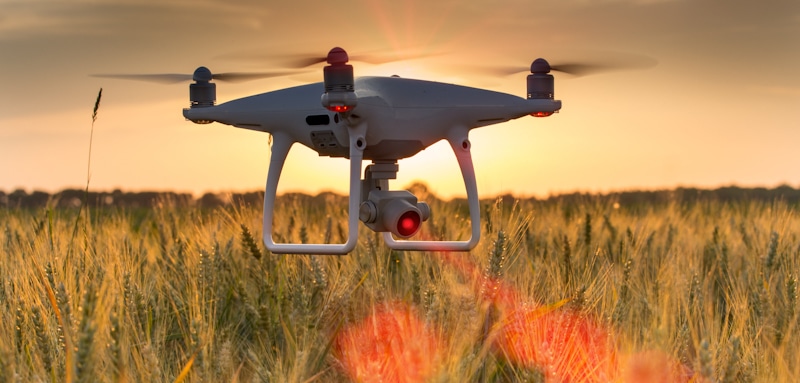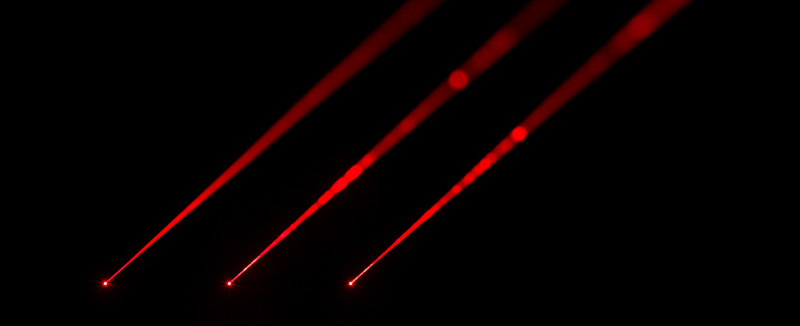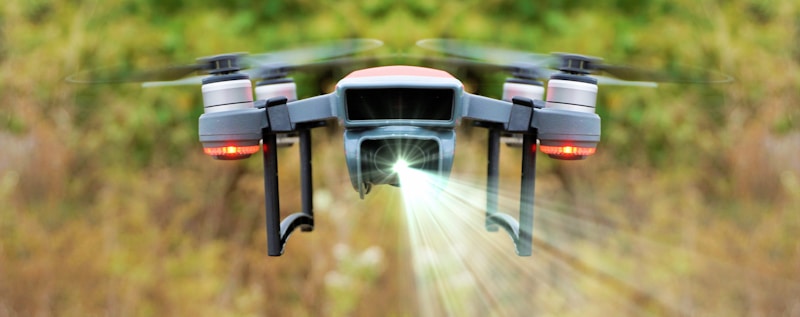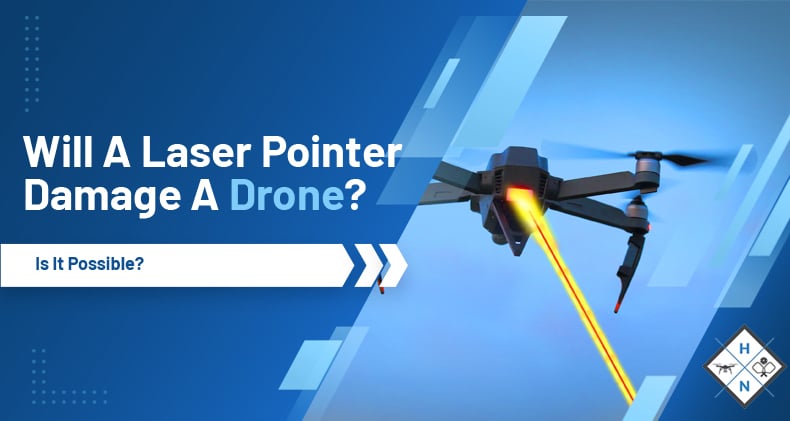Operating a drone is not free from risks. If you can somehow make it through the gusting winds, packs of birds, electrical wires, laser pointers are waiting for you at the next level. Not the industrial-grade metal cutting laser, but the ordinary run-of-the-mill pointers that we used to play with as kids. Can these child-safe yet disturbing laser pointers cause damage to your drone?
Yes, laser pointers can damage your drone. Lasers can obstruct a drone pilot's field of view by blinding the camera, causing it to crash or behave erratically. The sharp and heated rays of light can also disrupt the drone's internal wiring & interfere with their infrared landing sensors.

Can a laser point take down a drone?
The debate on laser pointers was not too relevant until the Chilean protestors brought down drones with their laser pointers. However, they used ordinary lasers to destabilize the police drone leading them to crash or run for their lives. After this particular incident, the drone community got into a debate on how laser pointers can damage a drone.
Three reasons have emerged from the Chilean protestor's skirmish with drones.
- Bright Lights: The camera fitted onto a drone represents the eyes of the drone operator. Every drone operator needs a clear line of vision to fly the drone without any interruptions or obstacles. Any sort of element that inhibits the operator's vision will blind their vision. Lasers emit a coherent and narrow beam of visible light that can blind the camera.
Since the drone operator has restricted access to the field of vision ahead, the person can lose control of the drone leading it to crash or collide with the objects nearby.
- Infrared Interference: Thermal infrared sensors are fitted on drones that deliver high-resolution imagery of the objects present below. Since drones fly at lower altitudes, they require these sensors to judge the surface topography beneath them accurately.
These images may not be necessary mid-air, but every drone operator needs a clear picture of the surface below the drone while landing. High-end drones have next-gen thermal infrared sensors that can read the heat-bearing objects trailing the ground, converting that data into a readable format and sending the same to the operator's screen.
Even a low-power laser beam can lead the infrared sensor to go haywire and render a hazy image of the surface around the drone. Here again, the drone operator is at the mercy of the accuracy of information sent through the interface. Inability to get a clear picture can lead to faulty landing, causing damage.
- Heating the System: Leaving out the industrial-grade lasers that can turn an object hotter than the sun, ordinary laser beams also carry some heat. It is simple physics. Every laser beam has innate energy, and when this energy comes into contact with another object, it generates heat.
Even a 1mW laser beam can produce an equal intensity of heat. Consequently, a 100 W laser beam can produce 100 W of heat that can be used to set things on fire.
So, in the case of Chilean protests, a pack of laser beams was flying in the air, collectively pointing at the drones. The cumulative heat generated from the laser can melt the drone's internal wiring, leading it to act erratically and crash.

High Powered Anti-Drone Laser Beams To Destroy UAVs
Anti-social elements have started using drones for various purposes that can threaten the security of a nation. There have been numerous cases where drones were used to scout the areas residing critical infrastructure of a country.
Last year there were multiple drone sightings over the Palo Verde Nuclear power plant in Arizona. Such activities need to be checked with countermeasures that can protect the sensitive areas restricting the drones from trespassing.
We have gathered a couple of developments that have been put into action to tackle drone infiltration. The high-energy laser beams emit heat that can disrupt the internal wiring system of the drone, ultimately causing it to malfunction and crash land.
Raytheon Drone-Killing Laser
The US Army has last year received a high-energy laser beam operator machine to bring down drones. The laser-beam machine is built by Raytheon; the high-energy laser can successfully deliver a kill-shot and destroy the drone in one go.
Technically named as High-Energy Laser Weapon System (HELWS), the drone-killing machine uses multi-spectral targeting to detect, track, and shoot down drones from the air.
The best part is that the laser-emitting machine can be mounted on a vehicle and positioned at any spot quickly.
Rafael Drone Dome
Rafael Advanced Defense Systems Ltd. has created a similar machine as Raytheon's that can identify, track, and shoot down drones from miles away. Officially called, Drone Dome C-UAS Laser System, it can also track maneuvering drones and follow their trajectory to emit laser beams. Drone Dome is effective even if the drone tries to evade the laser by rapid movements.
This particular machine has the ability to identify and track objects as small as 0.002 square meters and bring them down up to a distance of 2.1 miles. This Israeli drone-killing machine can even take down a swarm of drones as the high-energy laser beam can bring down the UAVs rather quickly.
Can These High-Powered Lasers Harm Humans?
Laser beams that can melt down the drone body can also cause damage to human skin. This means that it is not safe to use laser-powered drone killing machines within a city. Even though the laser beams will shoot up in the sky, the drones can easily use people and buildings in the area as a cover to evade the beams.
This means that the high-energy laser beams have limited utility, and they can only be deployed in areas with a minimum to zero human footprints. Even if a drone is brought down by a beam when flying high, it can crash in a populated area or collide with electrical wires.
There are numerous cases that we can list down depicting the impact of a drone crash. In any case, using high-energy laser beams within city limits or in a crowded place is not recommended.
That is why it is essential that these beams be used only around the borders to prevent infiltration.
Protective Measures Used By Drones
It is evident that irrespective of the power, laser beams can cause heavy damage to a drone leading them to crash. But, apart from maneuvering evasive measures to protect itself from the lasers, there are defensive lasers that are mounted on the drones to evade the offensive ones.
Isn't it ironic? It is almost like a drone laser tag competition. The countermeasures adopted by a drone is amazingly immaculate. A defensive laser system detects the incoming laser beam and identifies its power, pulse, and wavelength. As a response, the drone-mounted laser system produces its own laser to counter-attack the incoming beam.
There are two case scenarios here used by a counter laser to evade the attacking beam. First, it leads the incoming beam astray, making the attacker think that it has hit the target. Second, a direct hit with the incoming beam will produce a light burst, again making the attacker think that it has hit the beam on target.
Adsys Controls, a company in Irvine, California, has created an anti-laser system. Helios leverages the SWaP (Space, Weight, and Power) technique that counters the incoming energy beam. As a result, it nullifies the DEW or Directed Energy Weapon system quickly.
Such systems are still under research. As a result, a significant amount of information is not available at present. But, we can be assured of the fact that if there are measures to control the drone infiltration, counter-measure technologies are underway to nullify the impact of the attacking weapon.

Is it Legal to Shoot or Laser Down a Drone?
No, you cannot use a laser to bring a drone down, even if it is flying over private property. Drones come under the purview of the same rules that dictate a citizen's duty and behavior with aircraft. So, shining a laser beam at an aircraft tantamounts to a federal crime, and the same applies to drones. You can go to jail for doing so and even have to pay fines for indulging in unlawful activities.
Conclusion
Using a laser to bring down a drone works, and we have plenty of evidence to support this claim. From the Chilean protestors using lasers to the US Army getting access to high-energy laser beams to tackle drone infiltrations, lasers can prove to be a deadly weapon against drones.
However, using laser beams against drones is not something that you should do as it is illegal, and a drone crash in a populated area can lead to accidents. Where the military and counter-attack authorities are permitted to use laser beams for the overall safety, as a citizen, you cannot resort to such activities.
Shawn Manaher loves to play with new toys and dive into new hobbies. As a serial entrepreneur, work definitely comes first but there is always room for hobbies.

